Create a Native Garden – A Climate-Friendly Oasis – Step-by-Step
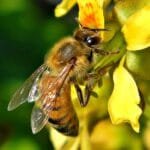
Create a Native Garden and a Climate-Friendly Oasis. A native plant garden is an excellent way to support local biodiversity, conserve water, and reduce maintenance. All while creating a beautiful, sustainable landscape.
Create a Native Garden and a Climate-Friendly Oasis. A native plant garden is an excellent way to support local biodiversity, conserve water, and reduce maintenance. All while creating a beautiful, sustainable landscape.
Here’s a step-by-step guide to building a native plant garden. This type of garden is all about planning upfront, cutting down on maintenance forever.
Why Choose Native Plants
There are many benefits to planting a native garden:
Water Conservation: Because native plants have adapted to your region’s natural rainfall. They’re a great choice for those looking to conserve water.
No Need for Pesticides or Fertilizers: Native plants are resilient against local pests and diseases. So, there’s often no need for chemicals. This reduces pollution and creates a safer environment for wildlife and humans alike.
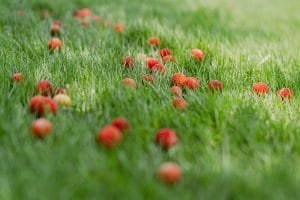
Support for Local Wildlife: Native plants provide food and habitat for native insects, birds, and other wildlife. Pollinators such as bees, butterflies, and birds will flock to your garden. Helping to promote biodiversity.
1. Understand Your Space
- Assess the Soil: Determine whether your soil is clay, sandy, or loamy, and check the drainage. In my case, the soil is clay, which is as hard as rock.
- Sunlight Exposure: Observe how much sunlight different parts of your garden get throughout the day. Is your garden in full sun, partial shade, or full shade?
- Climate: My area is in a cold temperate zone (USDA Zone 5b), so it’s important to select hardy plants that can survive the cold winters. Here are the maps for Canada and the United States.
2. Research Local Native Plants
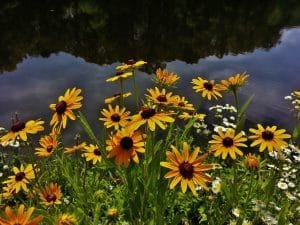
To create a native garden, focus on plants that are native. Try sites like Network of Nature.org and check your plant hardiness zone when buying. Network of Nature.org
I also have heavy clay soil, a cooler -20 degrees Fahrenheit (-29 Centigrade). And sunlight conditions.
Design Your Garden
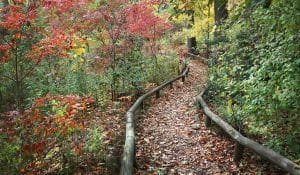
Create Zones: Group plants with similar needs (sun, shade, water) together. For example, place sun-loving, drought-tolerant plants in sunny, dry areas and moisture-loving plants in wetter, shadier spots.
Layering: Incorporate trees, shrubs, perennials, and ground cover to mimic a natural ecosystem. Taller trees and shrubs provide structure, while smaller plants and ground cover create a lush, layered effect.
Wildlife Habitat: Include plants that provide food and shelter for local wildlife. Native plants are essential for supporting birds, butterflies, and pollinators.
Paths and Mulching: Use mulch to suppress weeds and conserve moisture. Paths made from natural materials (wood chips, gravel) create defined walking areas and help prevent soil compaction. A starter site is grownative.org. It has good advice and some free garden plans.
4. Prepare the Soil
Amend Clay Soil: If your soil is heavy clay, consider amending it with organic matter like compost to improve drainage and fertility. You can also raise beds slightly to prevent waterlogging.
Remove Weeds: Clear any invasive species or weeds before planting to give your native plants a healthy start.
5. Plant Native Species
Timing: The best time to plant is in the spring or fall when temperatures are cooler and there’s more moisture. Fall is especially good for establishing root systems before winter.
Spacing: Plant trees and shrubs with enough room to grow to their full size. Native plants often thrive when planted in natural groupings.
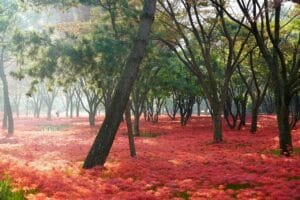
Mulching: After planting, spread a 2-3 inch layer of organic mulch (such as wood chips or bark) around the plants to retain moisture and control weeds.
6. Watering and Maintenance
Watering: Water deeply after planting, especially during dry spells. Once established, native plants typically require less water than non-natives.
Minimal Fertilizer: Native plants generally don’t require fertilizers, as they are adapted to local soil conditions.
Weeding: Weed regularly during the first couple of years to help the native plants establish themselves. Once they’re established, native plants usually outcompete weeds.
Pruning and Dividing: Prune dead or diseased branches and divide perennials every few years to keep the garden healthy.
There. A Native Garden and Climate-Friendly Oasis. Now, all that’s needed is a marvellous bench.
